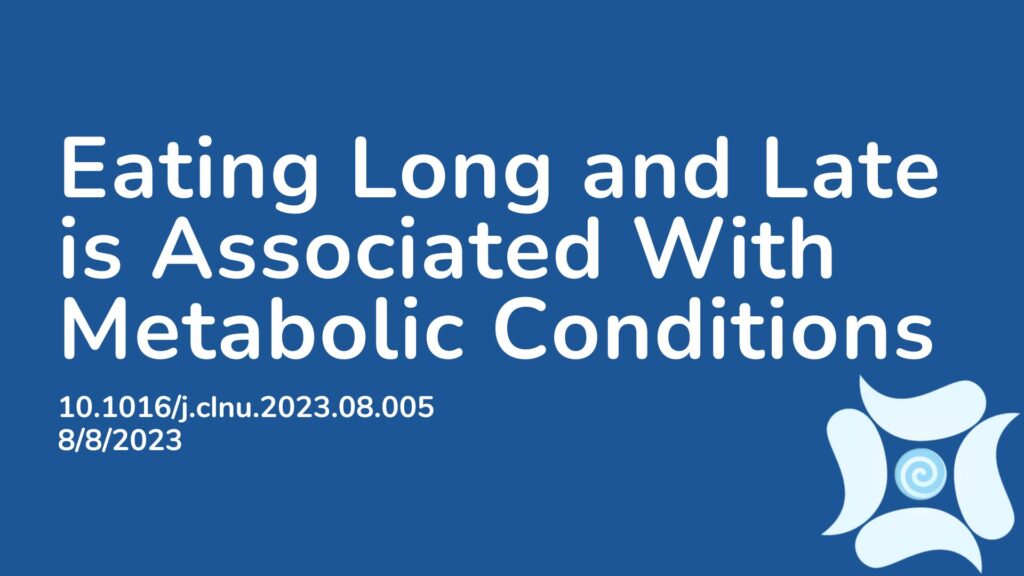Summary:
The purpose of this paper was to assess whether a late eating time is associated with poor nutritional status, obesity and metabolic outcomes, as current studies on this topic are limited. The population being studied was 7,379 adult and elderly individuals from the USA. Data on the participants meal times were collected via dietary recall diaries. The researchers measured the outcomes of the study by looking at rates of obesity and other metabolic parameters that might indicate metabolic syndrome. The results showed that adults who spent longer eating their food over the course of the day (greater than 12 hours of eating time in one day) had a higher prevalence of abdominal obesity, compared with the participants who ate their meals in less than 12 hours per day. Adults who ate later at night also had a higher risk of abdominal obesity and fasting glucose, compared with adults who finished eating earlier. Among the elderly, participants who spent longer eating their food over the course of the day had a higher prevalence of elevated triglycerides when compared with the elderly participants who ate their meals over a shorter period. The authors therefore concluded that a long eating duration and late last meal eating pattern is associated with metabolic risk factors in risk-free Americans.
Abstract:
Background & aims: Chrononutrition is an emerging area that suggests that late eating time is associated with poor nutritional and metabolic outcomes. However, epidemiological studies are scarce on this topic. The aim of this study was to characterize the chrononutrition patterns in a large and representative US population (NHANES 2015-2016 and 2017-2018) of adults and elderly and investigate their association with obesity and metabolic disorders that make up the metabolic syndrome. Methods: A total of 7379 adults and elderly individuals were included in the analysis. Meal timing data were collected through two 24-hour dietary recalls in both cycles. Poisson regression adjusted for confounders was used to evaluate the association between chrononutrition variables (eating duration and tertiles of first and last meal timing, eating midpoint and eating occasions) and obesity, abdominal obesity and metabolic parameters from metabolic syndrome. Results: Adults with a longer eating duration (> 12 hours) had a higher prevalence of abdominal obesity (IRR, 1.15; 95% CI, 1.03-1.28) when compared with those who ate their meals in a shorter eating duration (≤ 12 hours). In addition, adults in the third tertile of the time of the last meal (mean 22:03) had a higher prevalence of abdominal obesity (IRR, 1.12; 95% CI, 1.01-1.25) compared to first tertile. Adults with later eating midpoints (second and third tertile) had a higher prevalence of elevated fasting glucose (IRR, 1.30; 95% CI, 1.07-1.59 and IRR, 1.65; 95% CI, 1.22-2.22, respectively). Among the elderly, participants with a longer eating duration (>12 hours) had a higher prevalence of elevated triglycerides (IRR, 2.74; 95% CI, 1.25-5.96) when compared with those elderly who ate their meals in a shorter eating duration (≤12 hours). Conclusion: These findings suggest that a long eating duration and late first and last meal timing are chrononutrition patterns associated with cardiometabolic risks in free-living Americans
Article Publication Date: 8/8/2023
DOI: 10.1016/j.clnu.2023.08.005




